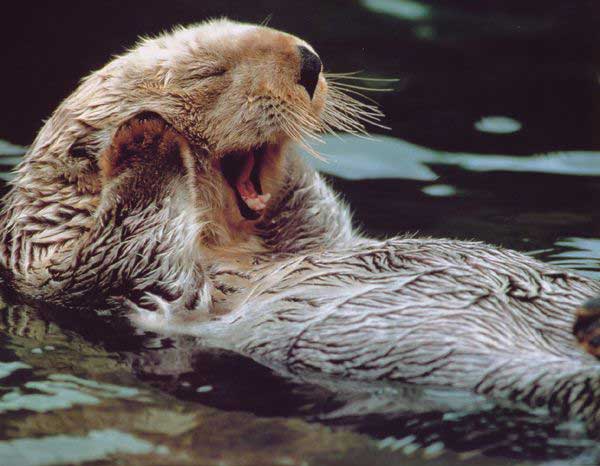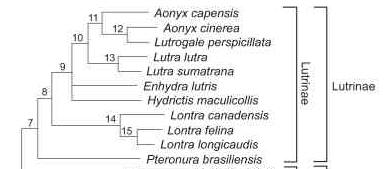

 ::
The Sea Otter
::
The Sea OtterEnhydra lutris
is in the domain eukarya because it has membrane bound organelles and has a nucleus. The species’ kingdom is animalia because the sea otter is motile at some point in their life cycle, multicellular, heterotrophic, and also lacks cell walls. The sea otter is in the phylum chordate because sometime during its life
cycle it has a notochord, dorsal nervechord, pharyngeal
slits, endostyle, and a post-anal tail.
Sea otters are also bilaterally symmetrical, like
all other chordates.
The class is Mammalia because it is a warm
blooded vertebrate.
Also the sea otter has sweat glands, hair, and
gives birth to their pups live and not from an egg like
other members of this class do.
Enhydra lutris is in the order carnivora
because this species is a meat eating animal.
The sea otter also has teeth and claws that
adapted to the habitat that it lives in along with the
animals it consumes.
The sea otters family is Mustelidae because this family
contains mostly small animals with short legs, short
round ears, and thick fur.
The sea otter fits all of these characteristics
and also is active year round like members in this
family. All
sea otters belong to the genus
Enhydra.
The sea otter is the only member of this genus.
This particular species is given the scientific
name of
Enhydra lutris.
the phylum chordate because sometime during its life
cycle it has a notochord, dorsal nervechord, pharyngeal
slits, endostyle, and a post-anal tail.
Sea otters are also bilaterally symmetrical, like
all other chordates.
The class is Mammalia because it is a warm
blooded vertebrate.
Also the sea otter has sweat glands, hair, and
gives birth to their pups live and not from an egg like
other members of this class do.
Enhydra lutris is in the order carnivora
because this species is a meat eating animal.
The sea otter also has teeth and claws that
adapted to the habitat that it lives in along with the
animals it consumes.
The sea otters family is Mustelidae because this family
contains mostly small animals with short legs, short
round ears, and thick fur.
The sea otter fits all of these characteristics
and also is active year round like members in this
family. All
sea otters belong to the genus
Enhydra.
The sea otter is the only member of this genus.
This particular species is given the scientific
name of
Enhydra lutris.
Domain: Eukarya
Phylum: Chordata
Class: Mammalia
Order: Carnivora
Family: Mustelidae
Genus:
Enhydra
Species: Enhydra lutris
This phylogenetic tree for the sea otter contains all the sea otter genera. The sea otter is the only member of the genus Enhydra. Each genus is a monophyletic group, meaning that the organisms in each genus share a common ancestor. The sea otter is sister to the speckle-throated otter (Hydrictis maculicollis) and is by far the closest relative to the sea otter. This also shows that the sea otter shares a common ancestor with the Eurasian otter (Lutra Lutra), African clawless otter (Aonyx capensis), small-clawed otter (Aonyx cinerea), and the speckle-throated otter (Hydrictis maculicollis).



 :: Sea Otter
:: Sea Otter

